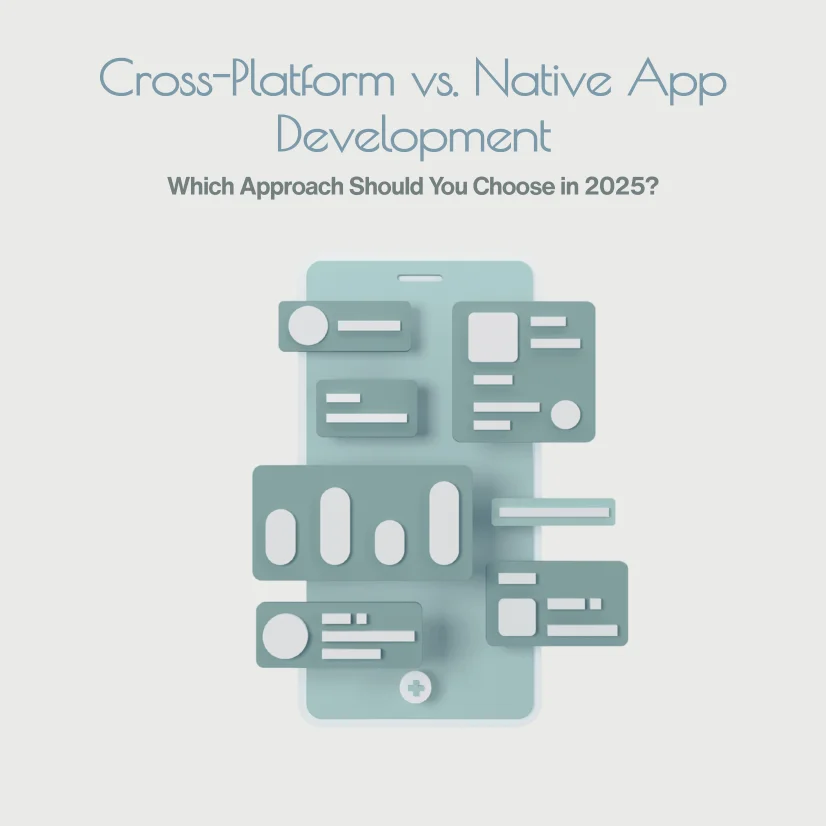The New Era of AI in 2025: From Gemini 3 to Creative AIs
Learn about the best AI tools for 2025, including Nano...
We use cookies for our website to give you the most relevant experience by remembering your preferences. By clicking “accept”, you consent to use of ALL the cookies
This website uses cookies to improve your experience while you navigate through the website. Out of these, the cookies that are categorized as necessary are stored on your browser as they are essential for the working of basic functionalities of the website. We also use third-party cookies that help us analyze and understand how you use this website. These cookies will be stored in your browser only with your consent. You also have the option to opt-out of these cookies. But opting out of some of these cookies may affect your browsing experience.
Necessary cookies are absolutely essential for the website to function properly. These cookies ensure basic functionalities and security features of the website, anonymously.
| Cookie | Duration | Description |
|---|---|---|
| cookielawinfo-checkbox-functional | 11 months | This cookie is set by GDPR Cookie Consent plugin. The cookie is used to store the user consent for the cookies in the category “Analytics”. |
| cookielawinfo-checkbox-functional | 11 months | The cookie is set by GDPR cookie consent to record the user consent for the cookies in the category “Functional”. |
| cookielawinfo-checkbox-necessary | 11 months | This cookie is set by GDPR Cookie Consent plugin. The cookies is used to store the user consent for the cookies in the category “Necessary”. |
| cookielawinfo-checkbox-others | 11 months | This cookie is set by GDPR Cookie Consent plugin. The cookie is used to store the user consent for the cookies in the category “Other. |
| cookielawinfo-checkbox-performance | 11 months | This cookie is set by GDPR Cookie Consent plugin. The cookie is used to store the user consent for the cookies in the category “Performance”. |
| viewed_cookie_policy | 11 months | The cookie is set by the GDPR Cookie Consent plugin and is used to store whether or not user has consented to the use of cookies. It does not store any personal data. |
Functional cookies help to perform certain functionalities like sharing the content of the website on social media platforms, collect feedbacks, and other third-party features.
Performance cookies are used to understand and analyze the key performance indexes of the website which helps in delivering a better user experience for the visitors.
Analytical cookies are used to understand how visitors interact with the website. These cookies help provide information on metrics the number of visitors, bounce rate, traffic source, etc.
Advertisement cookies are used to provide visitors with relevant ads and marketing campaigns. These cookies track visitors across websites and collect information to provide customized ads.
Other uncategorized cookies are those that are being analyzed and have not been classified into a category as yet.
Cyberia Tech, Inc. respects your privacy. This Privacy Policy explains how we collect, use, and share your information. By using our services, you agree to this policy. If any other agreements conflict with this Privacy Policy, the terms of those agreements prevail.
Cyberia Tech complies with the EU-US and Swiss-US Privacy Shield Frameworks for handling personal data from the EEA, UK, and Switzerland. In case of any conflict, the Privacy Shield Principles prevail. Learn more at Privacy Shield. Key Definitions
Information linked to an individual, transferred from the EEA, UK, or Switzerland to the U.S.
Data revealing race, religion, health, sexual orientation, and similar categories.
Effective Date: [ 2025 / 12 / 12 ]
Welcome to The Cyberia Tech ! By accessing or using our website or services, you agree to
comply with and be bound by these Terms of Use and our Privacy Policy. If you do not agree with
these terms, please do not use our Services.
Loading
0 %

In the ever-evolving world of mobile app development, the question of whether to go with Cross-Platform vs. Native App Development has become a central topic for developers, businesses, and tech enthusiasts alike. As the demand for mobile apps grows exponentially, the need for efficient, scalable, and user-friendly solutions has never been more critical. But with so many options available, the challenge lies in choosing the right approach to create an app that not only meets user expectations but also delivers a seamless performance across different platforms. In this article, we will explore the nuances of Cross-Platform vs. Native App Development, comparing their advantages, disadvantages, and the factors that should guide your decision-making process in 2025.
By the end of this article, you’ll have a clearer picture of which approach—Cross-Platform vs. Native apps—will best suit your project. We’ll dive deep into native app development pros and cons, discuss the latest trends in Flutter vs React Native 2025, and examine the mobile app development frameworks 2025 that could change the way you build apps. Whether you’re a startup looking for cost-effective solutions or an enterprise aiming for the highest performance, this guide will give you the insights you need to decide which app development method is better for you.

Before we get into the nitty-gritty of native app development pros and cons or the features of Flutter vs React Native 2025, it’s important to understand what each term really means.
Native app development refers to the process of building an application for a specific platform, such as iOS or Android, using the platform’s native programming languages and tools. For instance, iOS apps are typically built with Swift or Objective-C, while Android apps are developed using Java or Kotlin. The major advantage of this approach is that the app can be optimized for the specific platform, providing superior performance and access to native APIs (Application Programming Interfaces).
On the other hand, cross-platform app development uses a single codebase to build apps that can run on both iOS and Android devices. Frameworks like Flutter and React Native have made this approach highly popular because they offer significant time and cost savings. Cross-Platform vs. Native apps often boils down to balancing speed of development and cost-effectiveness versus performance and native features.

Native apps are optimized for specific platforms, meaning they can take full advantage of the device’s hardware and software. This optimization allows for faster performance and smoother user experiences. The primary reason many developers and businesses prefer native apps is their ability to utilize the native platform’s features and APIs, such as sensors, camera, and location services. These features allow the app to provide a deeper level of integration with the device, making it possible to deliver a richer experience. Additionally, native apps adhere to the specific design guidelines of the platform, which results in a more polished and intuitive user interface.
Moreover, native apps tend to work better offline. Since they store data locally on the device, users can continue using the app even without an internet connection. This can be particularly important for certain types of applications where offline functionality is a key feature.
However, native app development pros and cons are not without drawbacks. The most significant downside is the higher cost. Since separate codebases need to be written for each platform, native development is more resource-intensive and expensive. This is a challenge for startups or small businesses that are working with limited budgets. The development time also increases, as each version of the app has to be built separately for iOS and Android. This inevitably leads to delays in the overall timeline for getting the app to market.
Furthermore, maintaining a native app is not as simple as it sounds. Each platform requires individual updates, bug fixes, and optimizations. This can quickly become overwhelming and result in higher long-term costs, particularly if the app needs frequent updates or has a large user base.

Now that we’ve examined native app development pros and cons, let’s look at the advantages and drawbacks of cross-platform app development, which is becoming increasingly popular, especially for startups and small businesses.
One of the primary benefits of cross-platform app development is its cost-effectiveness. Since developers only need to write one codebase that can be used across both iOS and Android, the initial development cost is significantly reduced. This makes cross-platform development an attractive option for businesses that want to save money while still reaching a broad user base.
In addition to cost savings, the time it takes to develop an app is also considerably shorter when using a cross-platform approach. With frameworks like Flutter and React Native, developers can streamline their workflow and deliver an app to market faster. This is especially valuable for businesses that need to get their product out quickly to gain a competitive edge.
Another advantage of cross-platform apps is the consistency they offer. Since there is only one codebase, the app will function similarly across both platforms, ensuring a consistent experience for users. This also makes future updates easier, as developers only need to apply changes to one codebase, rather than having to update both the iOS and Android versions separately.

However, cross-platform apps are not without their challenges. One of the primary drawbacks is performance. While cross-platform frameworks have improved significantly, they still tend to fall short when it comes to speed and responsiveness compared to native apps. For applications that require high-performance or complex animations, a cross-platform solution may not be able to deliver the level of performance needed.
Another potential issue with cross-platform development is the limited access to native features. While cross-platform frameworks have made significant strides in providing access to most of the essential APIs, they might still fall short in allowing developers to tap into all the platform-specific capabilities. This can be a limitation for apps that rely heavily on advanced features or hardware integration.
Finally, cross-platform apps can sometimes deliver a slightly different user experience across platforms. Although efforts are made to ensure consistency, the look and feel of the app may not always match the platform’s native design guidelines. This can result in an app that feels less intuitive or polished on one platform compared to the other.
As we enter 2025, two of the most prominent frameworks for cross-platform app development are Flutter and React Native. Both have distinct advantages, but the right choice depends on your project’s needs. Let’s compare Flutter vs React Native 2025 to see how each stacks up.
Flutter, developed by Google, has quickly gained traction thanks to its ability to create visually stunning apps with high performance. Flutter uses Dart, a programming language that allows developers to write more efficient code. One of the key features of Flutter is its ability to create highly customizable user interfaces, which makes it an excellent choice for developers looking to create unique, visually appealing apps. Flutter’s Hot Reload feature also allows developers to see changes in real-time, speeding up the testing and development process.
React Native, on the other hand, is backed by Facebook and has been around longer. React Native uses JavaScript, one of the most widely-used programming languages, making it easier for developers to transition into mobile development. React Native benefits from a large, active community that continuously contributes to its growth and improvements. Like Flutter, React Native also offers Hot Reloading, which allows for faster development cycles. One of React Native’s strengths is its ability to integrate with native modules, allowing developers to access more platform-specific features if needed.
As the mobile app development landscape evolves in 2025, mobile app development frameworks are continuing to innovate and provide developers with even more powerful tools. New frameworks and enhancements to existing ones promise faster, more efficient development processes with greater flexibility.
Key trends to watch in 2025 include:

So, when it comes to deciding which app development method is better, the answer is not straightforward. The choice between cross-platform vs native apps ultimately depends on several factors:
1. What are the main differences between Cross-Platform and Native App Development?
Cross-platform development allows you to build apps for multiple platforms (iOS, Android, etc.) using a single codebase, saving time and resources. Native app development, on the other hand, involves creating separate apps for each platform, offering superior performance and access to platform-specific features.
Which is better for my business: Cross-Platform or Native App Development?
The best choice depends on your project requirements. If you want to save time and money while targeting multiple platforms, cross-platform development is ideal. However, if you need high performance and full access to platform-specific features, native app development is the better option.
What are some popular frameworks for Cross-Platform App Development in 2025?
Frameworks like Flutter and React Native are leading the way in cross-platform development, offering advanced capabilities and continuously evolving to meet developer needs. These frameworks are pushing the boundaries of what’s possible in cross-platform app development.
How do I decide between Cross-Platform and Native App Development for my app?
Consider factors like your budget, timeline, target audience, and app requirements. If you need a cost-effective solution for multiple platforms, go for cross-platform. If performance and platform-specific features are critical, native development is the way to go. Understanding the pros and cons of each approach will help you make an informed decision.
As we look ahead to the future of mobile app development, the debate between Cross-Platform vs. Native App Development will continue to evolve. Both approaches have their strengths and weaknesses, and the best choice depends on your unique project requirements.
For businesses looking to save time and money, cross-platform app development offers compelling benefits, especially with frameworks like Flutter vs React Native 2025 pushing the boundaries of what’s possible. However, for those seeking the highest performance and access to platform-specific features, native app development remains the gold standard.
The future of mobile app development is exciting, with new frameworks, tools, and technologies constantly reshaping the landscape. Whatever path you choose, understanding the pros and cons of native vs cross-platform apps will be essential in making an informed decision.
Now that you know the differences between Cross-Platform vs. Native App Development, it’s time to make a choice that aligns with your vision and goals. Are you ready to take the next step in your mobile app development journey? Whether you’re building an app for iOS, Android, or both, the key is to select the approach that will bring your app to life in the best way possible.
You Can Get More Information!
